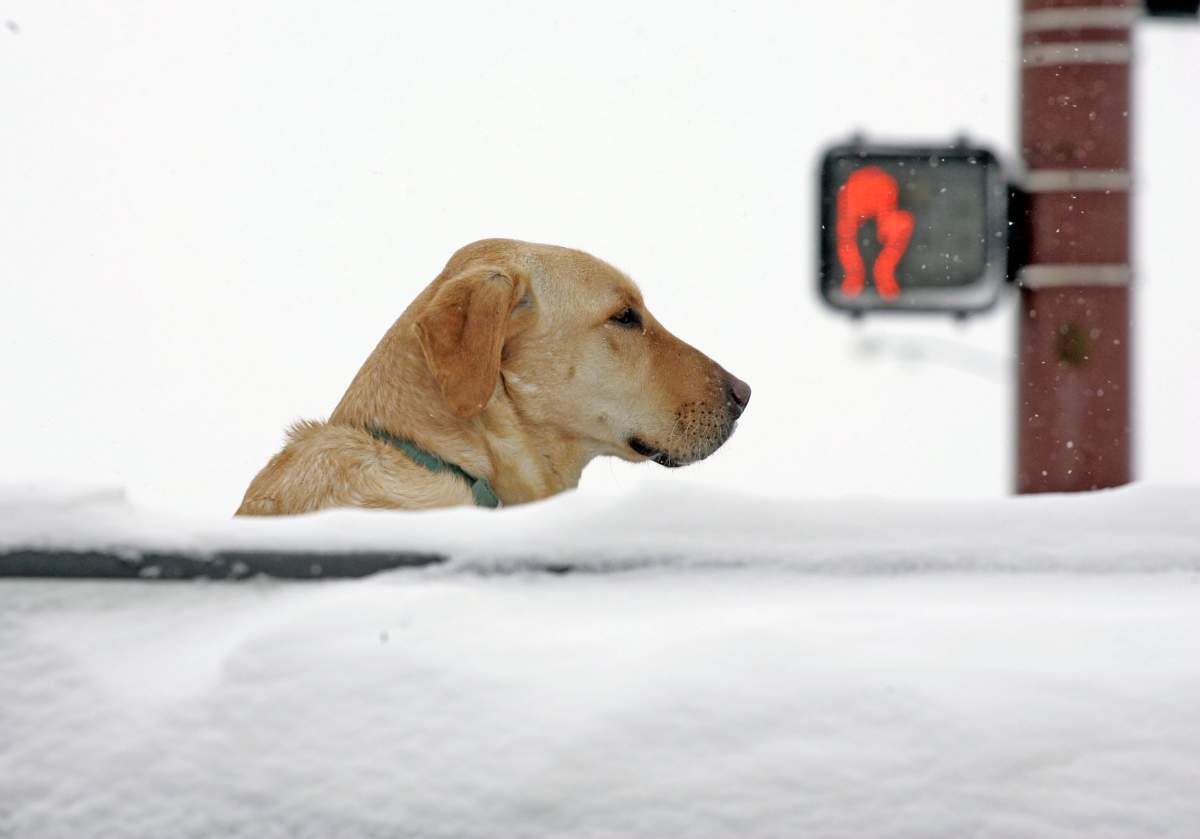After a Saturday afternoon hike in Canmore, Alta., David MacDougall was returning to Calgary in the rain when he drove past a truck with a dog in the back.

MacDougall had his two dogs inside his truck when he passed the vehicle around 3:30 p.m. on Highway 1 just past Morley.
Responsible pet owners shouldn’t be doing something so cruel and dangerous, MacDougall said.
“If you’re going to own a pet, the last place in the world you should have them is tied up in the back of a truck.”
He said the dog looked scared.
“That dog didn’t look happy at all. It was raining and it was wet. And it looked like it was afraid,” said MacDougall.
Calgary’s bylaw states that “dogs may only be transported in the back of a truck if the dog is in a fully enclosed trailer, a truck bed covered with a topper, contained in a ventilated kennel that is secured to the truck bed, or securely tethered and not standing on bare metal.”

Get breaking National news
Section 2.1 of Alberta’s Animal Protection Act says that a person who owns an animal must ensure it has adequate food and water, care, protection, and shelter. Violations can carry penalties up to a $20,000 fine.
The Alberta SPCA has received three calls in the past week related to animals being transported this way in the province.
Dan Kobe, the society’s communications manager, isn’t certain these situations are happening more than usual, but said they often happen in waves.
“For us, it’s disappointing to see that animals are being transported in the back of a pickup or on a flatbed at highway speed,” he said. “That certainly increases the potential danger to the animal, to other drivers on the road.”
If you transport your dog in the back of a truck, it could jump or fall out.
“If that happens in traffic, obviously that presents a danger to the other drivers on the road and certainly won’t end well for the dog involved,” Kobe said.
If the dog is tethered to the vehicle, there are still safety risks.
“If the leash is more than a foot long, there is still the potential that they could slip off or jump out of the truck and then potentially be dragged along the side of the truck.”
Ideally, dogs should transported in a way where they can’t “accidentally or purposely” jump out, said Kobe. A secure crate inside the vehicle or in the truck bed works. If you don’t have a crate, Kobe recommended the back passenger area of the vehicle, where the pup won’t be a distraction to the driver.
“If you are transporting an animal in the back of a pickup truck, the sides of the pickup truck have to be high enough and strong enough to keep the animal secure and protect it from the elements, whether that be injurious heat or cold,” he said.
“You can have an animal in the back of a truck, but it must be in a position where it’s not going to be in distress and not put in harm’s way.”
If you see an animal being transported unsafely, the Alberta SPCA encourages people to get as much information as possible, including the licence plate, vehicle make and model, number of occupants and direction of travel.
If you’re outside of Edmonton or Calgary, both of which have their own humane societies, call Alberta SPCA at 1-800-455-9003.
If an animal is in imminent danger, it’s best to call the police, Kobe said.



Comments